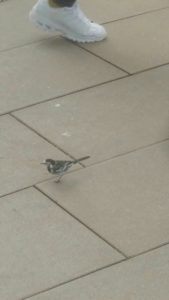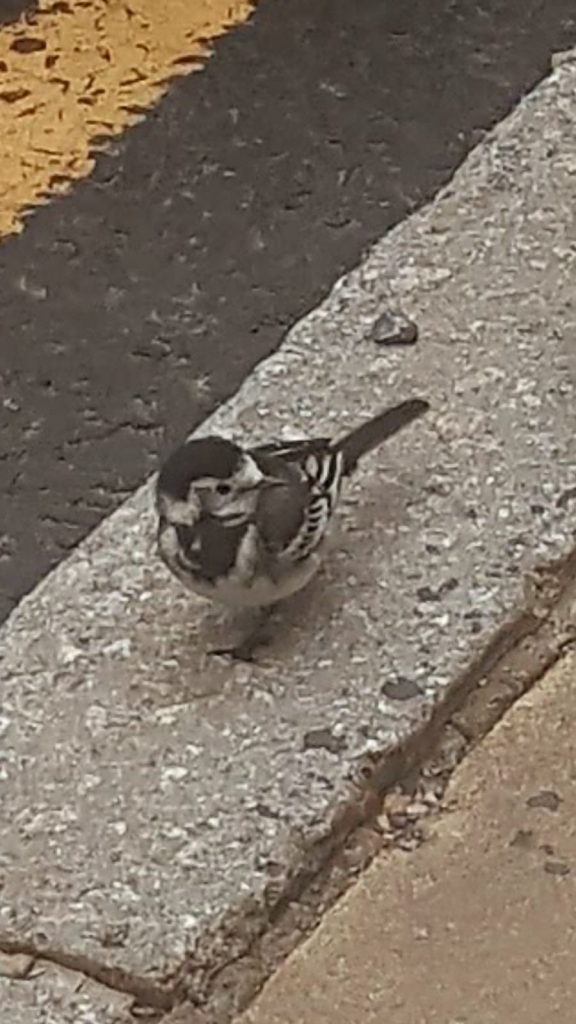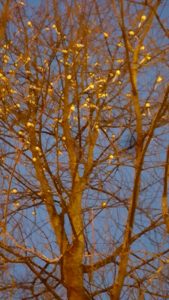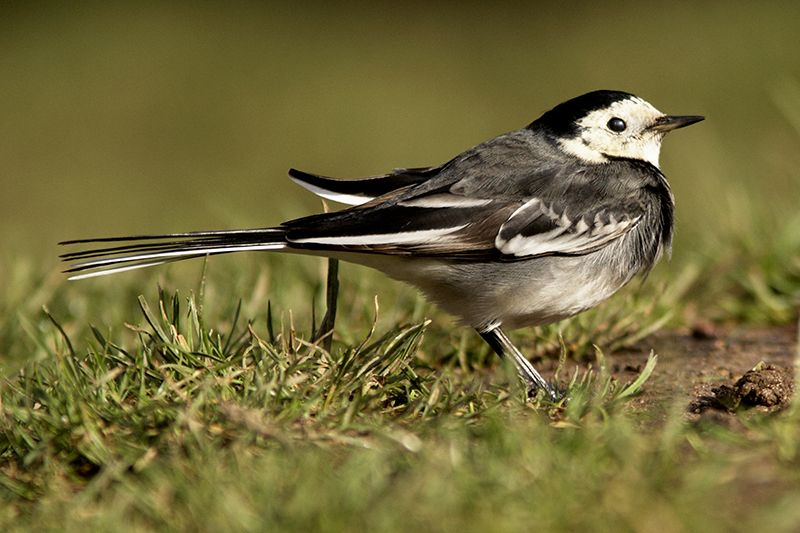The other day as I walked through town, I got stuck for a few moments in a large group of people and as I waited for the people jam to start moving a Pied Wagtail landed on the edge of the crowd and busily started feeding in amongst the crowded pavement.

I have seen this many time over the years and always been in full admiration of this smart, fearless and distinctive little birds. And if you take a look at the life and significance of this species we find another interesting story of our native wildlife. Pied Wagtails can be found in virtually any open habitat in the UK and I have personally seen them in many different habitats from town centres to mountains along with farmland, reedbeds, airports, rivers, beaches, sewage farms, gardens and once on a ferry off Scotland to name a few. They are birds of open country and avoid wooded and heavily vegetated areas but can be found readily in what I call human habitats.
It’s probably worth pointing out that Pied Wagtails are a sub species of White Wagtail, which is a species commonly found across Europe and occur from Greenland to North Africa. They are also found across Asia and have recently been found breeding in Alaska. There adaptability to varied habitats has probably helped them spread across most of the northern hemisphere The White Wagtail appears to be very similar in appearance to our Pied Wagtail but has a distinctive paler grey back and greyer wings. Behaviourally they are identical and I recall from a childhood visit to Venice, seeing White Wagtails on St Mark’s square. The pied sub species that we in the UK know, is only found in UK, Ireland and on the coasts of northern France, Belgium and the Netherlands and nowhere else in the world. which shows the global importance of the birds we see here in Surrey.
One of the reasons I’m writing this article is purely because I find watching Pied Wagtails a very entertaining experience! When they are feeding they are very active and I have witnessed them flycatching insects in many locations from riverbanks to agricultural fields and seen them running as fast as possible trying to steal cake crumbs from feral pigeons. They are mainly insectivorous feeders and will gather in areas where there is a good supply of invertebrate to feed on. They will also eat human scraps which attracts them to our towns particularly during the winter when insects are far less numerous.

Nesting birds also show a great variety in choice of nest sites. Nests can be found in a number of interesting locations including cracks in walls, straw bales, under loose tiles, in stone walls and in a tractor cab that the adults successfully raised young from even after the tractor had been used and my friend who was using the tractor, saw the adults flying into the cab whilst the tractor was moving. They are very committed parents. They normally have two broods of 4 – 6 eggs each breeding season and post breeding flocks can often be seen feeding on playing fields in late summer and early autumn.
Birds that breed in northerly areas of the UK will migrate south during cold weather and during the winter some birds can be seen on the Atlantic coasts of France, Spain and Portugal and a few make it as far south as Morocco and Tunisia.
Like a good number of small passerine birds; Pied Wagtails roost communally and can gather in large numbers to use chosen roost sights. Up to 4000 have been seen in a single roost and as I have witnessed just before they go to roost they will gather in flocks in the surrounding area and be very vocal before flying to the roost site.
The choice of roost sites is another sign of this species adaptability for many of the roost sites are located in urban areas and I know of 3 roosts locally which are all in town centres. The one in Guildford is truly amazing as it is located in a few trees next to Friary Shopping Centre and one of the busiest roads in town and I have found it a quite surreal experience when visiting the site in the winter months, witnessing these small birds just sit quietly as people talk and walk by and rush hour traffic roars past. I also find it quite amazing how few of the passing pedestrians actually notice the 100s of Pied Wagtails a few feet above their heads.

In more rural areas they often roost in reedbeds which offer good protection from land predators and water can actually keep a constant temperature and, in common with the urban sites, roost sites are chosen for warmth and security. Many urban sites are warmer because of the heat of electric lights, machinery and people in the area.

Pied Wagtails are a fascinating species and a familiar species to most people but like many bird species, they are declining in the UK and the reasons for the decline are all to familiar a story. The agricultural changes and mis management of riparian and wetland habitats has reduced insect numbers which in turn has seen numbers of breeding birds decline. There is hope that they will be able to use their adaptability in order to survive and although I feel troubled by all the birds that are in decline, I feel that Pied Wagtails will get through. Whenever you next see one and have some spare time I thoroughly recommend you watch and see what they are up to, you may get quite a show.
